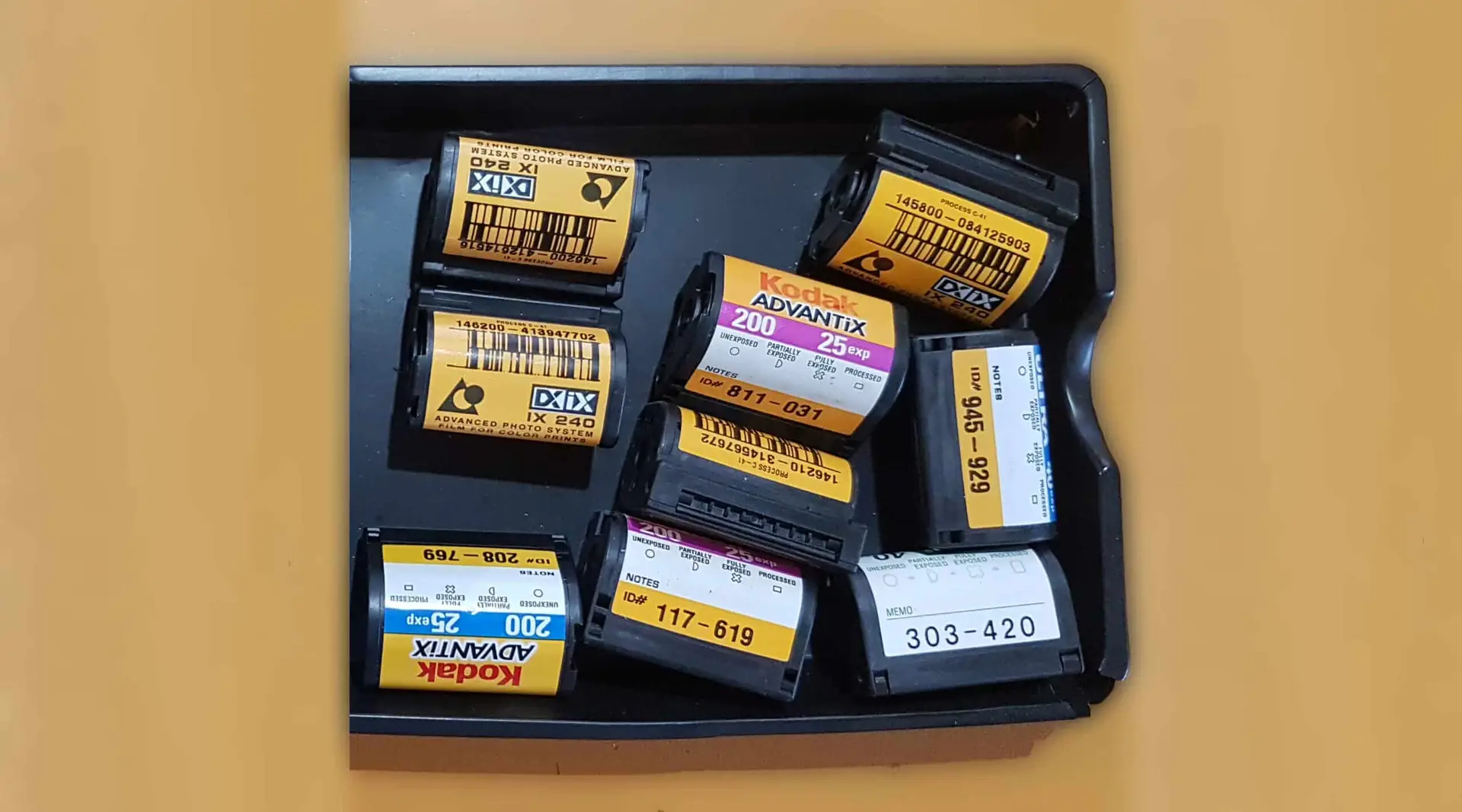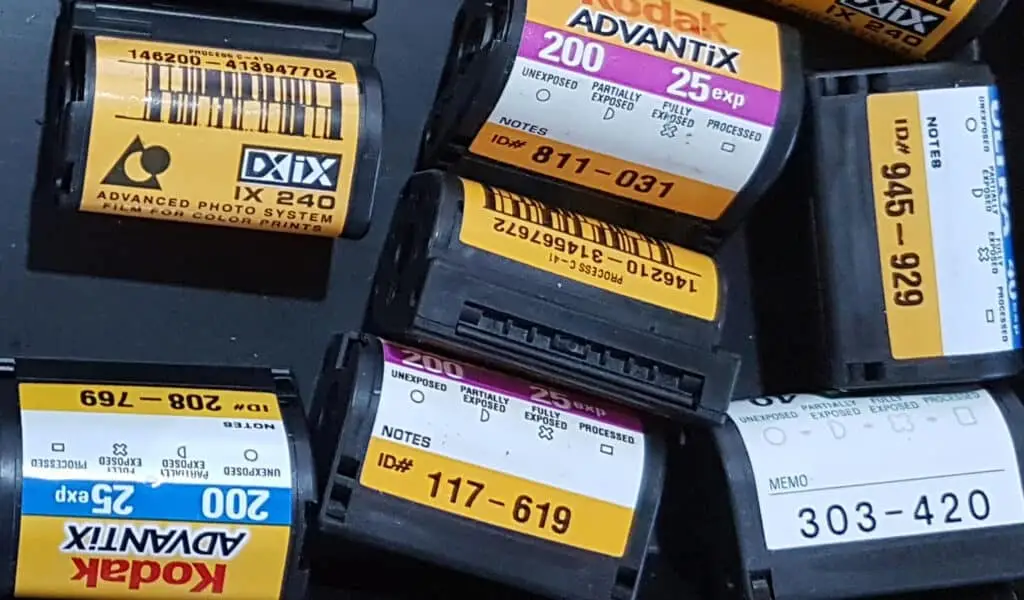


APS film, short for Advanced Photo System film, emerged in the 1990s as a cartridge-based film type, aiming to provide a compact and user-friendly option for both beginners and casual film photographers. When choosing an APS film scanning service, you should be aware that it’s compact size and ease of use made it an attractive choice for capturing memories. However, APS film had its limitations, and its eventual demise was intertwined with the digital photography revolution.

In 2010, Kodak announced the discontinuation of Kodachrome film processing, marking the end of an era. Kodachrome was renowned for its vibrant colors but was a complex and impractical film to process. Despite its challenges, many, including myself, lamented its departure. It was, after all, a significant pillar of photographic history. In contrast, APS film occupied a different space in the world of photography. While it couldn’t quite match the legacy of Kodachrome, for those who had a soft spot for nostalgia, it held a certain charm.
As digital photography gained prominence, the higher costs associated with APS film development began to deter users. In 2011, APS film was officially discontinued. Even the newest rolls of APS film had already expired by that time. Though you might still stumble upon outdated APS film on auction sites, it’s a finite resource, and once it’s gone, it’s gone. Consequently, APS cameras found themselves relegated to the status of expensive paperweights.
For those unfamiliar with APS film, it’s essential to grasp its unique characteristics. Unlike standard 35mm film, APS film remains entirely encased by its cartridge, even after development and scanning. This enclosure, coupled with a magnetic coating on the film, allowed for the recording of information such as camera settings alongside the image. However, the smaller film size meant it couldn’t capture as much detail as its 35mm counterpart.
APS (Advanced Photo System) film was a popular film format used in analog cameras during the late 1990s and early 2000s. The quality of APS film, like any photographic format, depends on various factors, including the film type, the camera used, and the skill of the photographer.
APS film comes in three different image formats: APS-C, APS-H, and APS-P. APS-C is similar in size to traditional 35mm film, while APS-H and APS-P provide larger and smaller formats, respectively. The image quality can vary depending on the chosen format, with larger formats generally offering better image quality.
Just like 35mm film, APS film came in various ISO (film speed) ratings, which affected its sensitivity to light. Higher ISO films were better suited for low-light conditions but could result in more grainy images, while lower ISO films produced finer-grained images but required more light.
The quality of the camera used to capture APS images played a significant role in the overall image quality. High-quality APS cameras with sharp lenses and advanced features could produce excellent results, while lower-end models might not deliver the same level of quality.
The quality of the film development and printing process also affected the final image quality. If the film processing lab or technician was skilled and used good equipment, the results would be better.
APS film had certain characteristics that some photographers appreciated. For example, the smaller APS-C format often led to a slightly different look compared to standard 35mm film. Some photographers liked the convenience of the APS cartridge system, which protected the film from light exposure when not in use.
APS film offered advantages like easy drop-in loading, automatic film transport, and the ability to change film rolls mid-roll without losing frames. However, it had some limitations in terms of image quality compared to larger formats like 35mm or medium format film.
In summary, the quality of APS film can vary depending on several factors, including the film type, camera, and processing. Some photographers appreciated the convenience and unique characteristics of APS film, while others preferred larger formats for higher image quality. Ultimately, the choice of film format and the quality of the final images depend on the photographer’s preferences and requirements. That’s why it’s important to partner with a reputable and experienced partner for APS Film Scanning Service uk.

When examining an APS film cartridge, you’ll notice numbers at the bottom, typically ranging from 1 to 4. These numbers convey crucial information:
Full Circle: A white dot next to number one indicates an unused roll.
Half Circle: If number two is highlighted, the roll has been partially used. APS film’s flexibility allowed users to reload it and continue shooting at a later time.
Cross: When the cross is highlighted by the white dot, the roll has been used and requires development.
Rectangle: The presence of a rectangle indicates that the film has been developed and is ready for scanning.
APS film can still be developed, although it necessitates removing the film from its cartridge. Consequently, the film is returned to you as a negative and not stored within the cartridge.
Film Digitising Apps: There are smartphone apps designed to help you digitise film using your phone’s camera. They often require a bit of setup with a light source and a way to hold the film flat. While they may not offer the same quality as dedicated scanners, they can be a cost-effective solution for casual use.
Scanning APS film is also feasible. These rolls often contain forgotten memories from the early 90s, making them intriguing to scan. You’ve come across some APS film, perhaps you found it in the depths of your attic and you wonder what you can do with this distant relic. Its well worth getting it developed, It could have a lost trove of old videos that you would want to share with your family, unearthing the past to share with your loved ones.
If you are looking to get your aps film digitalised, is choose a dedicated professional company that offers an APS Film Scanning Service uk such as Supaphoto
APS film production ceased in 2011, its legacy lives on in the form of lost rolls and memories they hold. As digital photography democratised image-making, APS film became a relic of a bygone era. For those who appreciate a touch of nostalgia, APS film remains a testament to the evolution of photography, preserving cherished moments in a unique way.